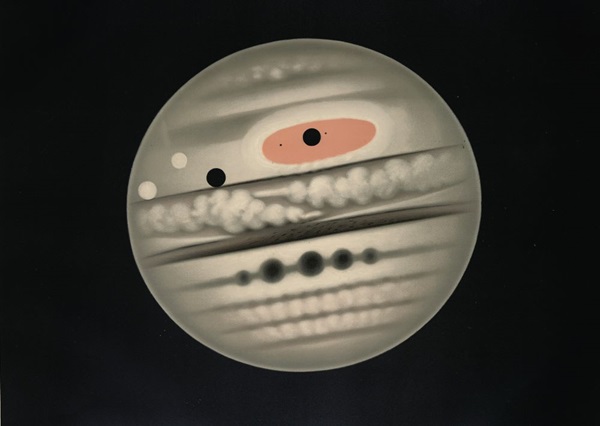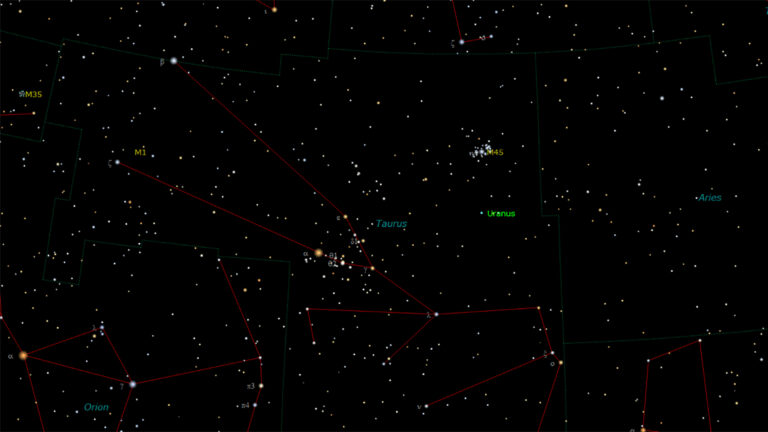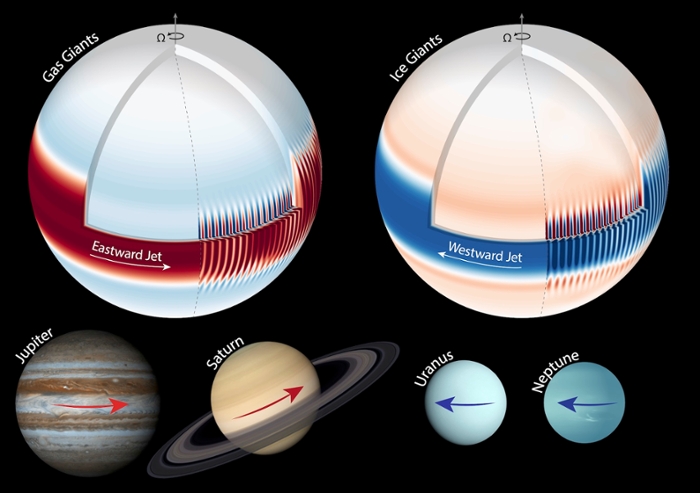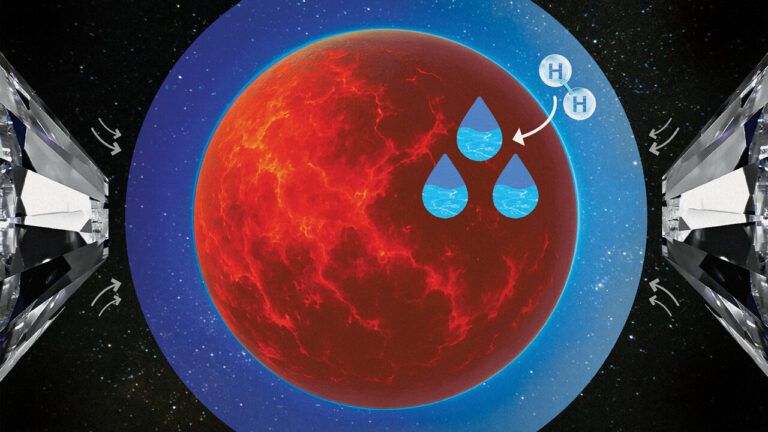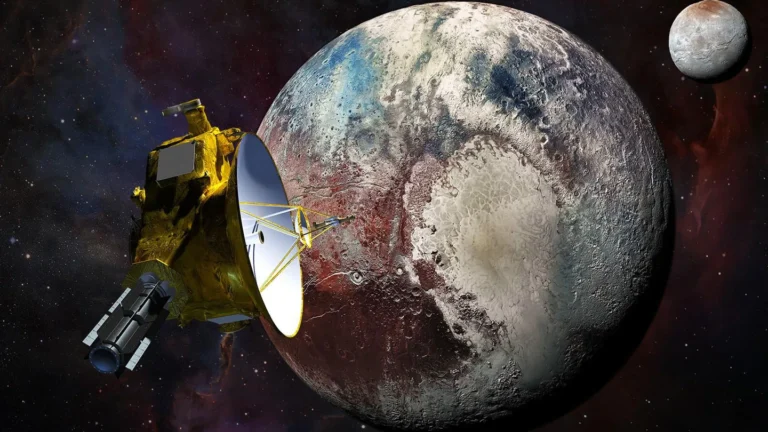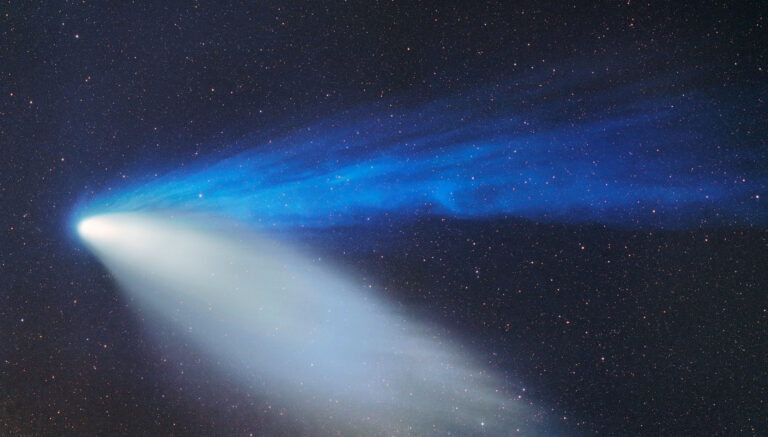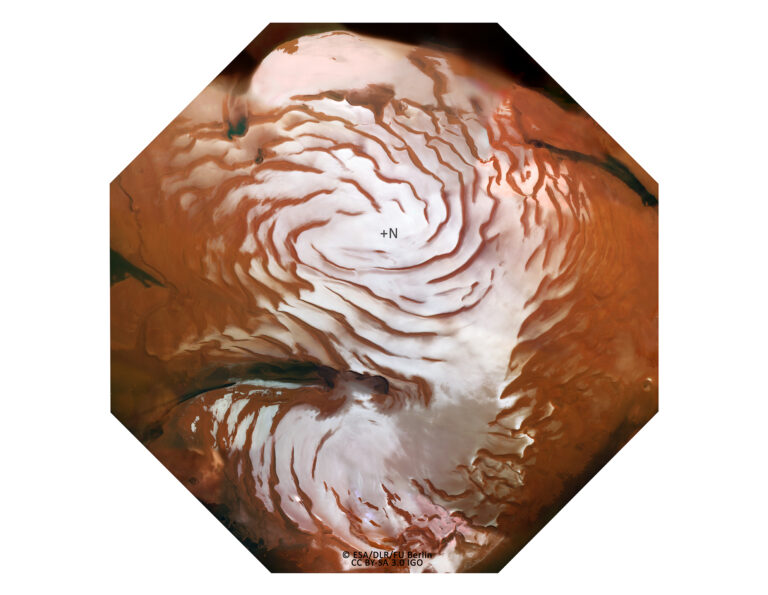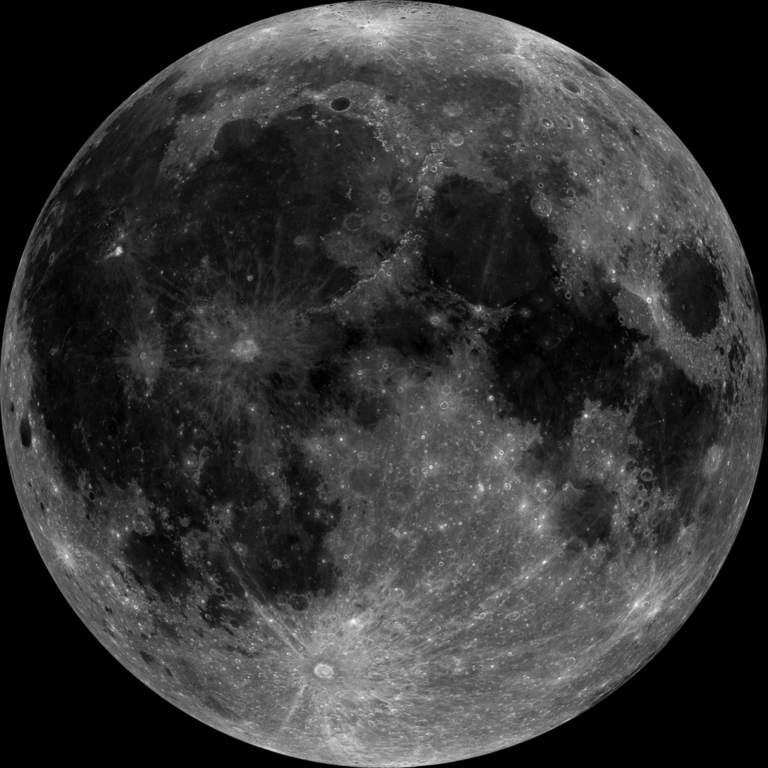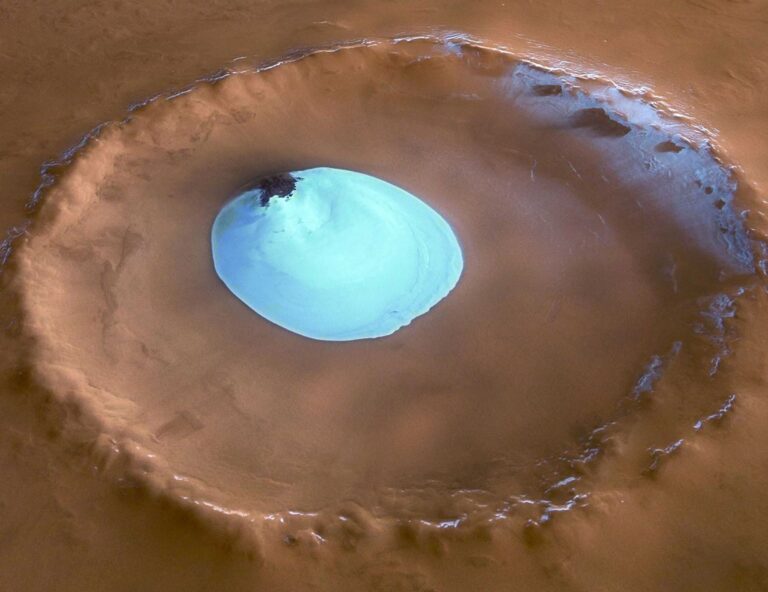Key Takeaways:
What’s more, we are presented on December 21 with a rare opportunity to compare and contrast Jupiter and Saturn, our solar system’s two largest planets, when they approach within 6′ of one another in the sky. So, begin familiarizing yourself with the appearance of these worlds through your telescopes, for who knows how many personal or scientific discoveries you’ll make! It is the very nature of these two dynamic gas giants to offer up surprises.
Because Jupiter reaches opposition first, let’s look at some of the unusual phenomena that you can attempt to see on the king of planets with the naked eye and a telescope.
Naked-eye sightings of Jupiter
Shortly after opposition, Jupiter enters the pre-sunset sky, making it a perfect target for daytime naked-eye sightings. At opposition, Jupiter will shine at magnitude –2.8, just 0.1 magnitude brighter than Mars during its July 2018 opposition. (The Red Planet was then sighted by several people without optical aid.) Observers have spotted a dimmer Jupiter in the daytime as well. In August and September 1917, F. Sargent of Bristol, England, followed the planet in the daylight sky for more than an hour when the planet glowed at magnitudes –2.1 and –2.3, respectively.
Close to opposition, when Jupiter is at its highest in the southern sky, keen-eyed observers will also have their best opportunity to search for at least one of the planet’s four Galilean moons without optical aid. On the evenings of July 13 and 14 between the hours of 3 and 5 Universal Time (UT), Callisto will be at its greatest western elongation from Jupiter — the prime time to look for the moon.
Jupiter and the witching hour
To get the most out of observing Jupiter at opposition, concentrate on the midnight hour, when the planet appears highest in the sky and its detail is most rewarding. And no planet shows more detail than Jupiter, especially when observing with powers up to 75x per inch of aperture. This July, Jupiter’s disk measures 48″ across, only 2.1″ less than its maximum apparent size. Fine details then will be near their best.
Although all of Jupiter is worth monitoring, observers have of late been keeping watch on several recently active regions. Jupiter’s trademark Great Red Spot (GRS) especially bears watching. Most notably, since 2017, slivers of red material have been observed peeling off the spot, distorting its familiar oval appearance, usually with extensions described as flakes, blades, and hooks. While it’s not unusual for the GRS to pull in material or slough it off, the magnitude of these recent events has been great enough to make them visible in a 3-inch refractor at 200x (in June 2019).
The GRS has significantly diminished in size since the 1800s and may be on its way to nonexistence, although its recent shearing behavior may also be linked to a natural weather phenomenon: the interaction of winds between the GRS (an anticyclone) and a cyclone that has come close to it.
In August 2019, Australian amateur astronomer Phil Miles detected a white storm erupting in the planet’s South Equatorial Belt (SEB, just preceding the GRS). By February 2020, the disturbance had coursed through the normally dark belt, creating a bright interior zone.
Such disturbances are uncommon but not unusual. Jupiter’s dark bands change over irregular timescales. Occasionally they can even fade away entirely, as the SEB last did in 2010. The SEB disappears when whitish clouds form on top of it. This type of event is associated with extensive changes to other bands, spots, and colors in Jupiter’s atmosphere. Interestingly, astronomers anticipate a significant color change in the planet’s Equatorial Zone in the next year or two.
Saturn and the midnight hour
Saturn achieves opposition on July 21 at 22h14m UT, when the planet will shine at magnitude 0.1 with an apparent equatorial diameter of 19″, while the rings will measure 42″ across. If you monitor Saturn’s rings through a telescope in the weeks before opposition, you’ll find them shining roughly as bright as the planet’s globe. For a couple of days around opposition, the rings will temporarily intensify in apparent brightness, outshining the globe before dimming back to their normal appearance. It’s one of the most visually fascinating occurrences of any planet.
This peculiar change is called the Seeliger effect, in honor of German astronomer Hugo von Seeliger (1849–1924), who first noticed it in 1887. In addition to this shadow hiding, the Cassini spacecraft revealed that coherent backscattering — sunlight interacting with the collective particles in the planet’s rings — contributes significantly to the phenomenon, as the many irregular bits of rock and dust combine to produce more intense light. This light scatters back to our eyes and makes the rings seem to brighten.
White Spots?
Overall, Saturn presents a less dynamic range of details on its globe than does Jupiter, mainly displaying varying belts and zones without the finer details. This is why most observers tend to focus their attention on the rings. Episodically, however, Saturn’s globe erupts with stunning detail. The planet’s 2020 apparition may be one of those years that brings us some visual surprises.
Chief among them may be the return of the Great White Spot — a fantastic high altitude storm that surfaces roughly every 20 to 30 years. The greatest storms can be as large as Earth, with tails that wrap entirely around the planet over the course of months as regions of Saturn’s globe transform into a tempest of dynamic change. Six such storms have been observed on Saturn over the past 140 years, alternating between the equator and midlatitudes. Up until 1990, all the storms had occurred on a roughly 30-year cycle, but a surprise Great White Spot broke the cycle, occurring at an unexpected time and latitude.
The storms usually occur when Saturn’s northern hemisphere is most tilted toward the Sun near the moment of saturnian midsummer. The spots appear to be caused by erupting plumes of warm moist air that rapidly bring ammonia ice crystals into the planet’s upper atmosphere, triggering thunderstorms.
Three types of storms have been recognized to date: small white storms (like those that occurred in 1994 and 2006) that measure about 1,240 miles (2,000 kilometers) across and appear as bright clouds for a few days; Great White Spots (like those of 2010 and 1990) that are up to 10 times larger than the small storms and last for months every two to three decades; and midsized storms (like those detected near Saturn’s north pole in 2018) that can last anywhere from 10 to more than 200 days.
Will a Great White Spot appear on its normal 30-year cycle in 2020? The answer remains unknown. In fact, much remains uncertain about these storms, such as: How periodic are they? Can they occur at any latitude? How are they triggered?
Saturn’s spokes?
This year, the north face of Saturn’s rings will be inclined 21° from edge-on. That’s just 6° from their maximum opening, or within 1° of the ring angle (20°) when spokes may occur.
Spokes are tiny particles levitated above the ring plane by electrostatic forces. Some astronomers believe they are connected to massive thunderstorms in Saturn’s atmosphere. According to one theory, lightning strikes — 10,000 times more energetic than those on Earth — release beams of electrons that surge up from Saturn’s cloud tops like sprites, zapping the rings and blasting out jets of electrically charged dust that get trapped in the planet’s electromagnetic field and appear as spokes.
Some models of spoke formation, which take into account plasma density in the rings, say that spoke activity switches on when the angle between the rings and the Sun is between 0° and 20°. When that happens, we may expect spoke activity for about eight years. The spoke situation should be in full swing by Saturn’s August 2021 opposition, when the rings will be angled 18° to our line of sight. As these predictions are only based on models, be sure to start looking now.
Given that this is a good season for white spots and thunderstorm activity to occur, will the spokes manifest in concert with increased white spot activity?
Shadow play
Around the time of opposition, the shadow of Saturn’s globe plays a game of hide-and-seek with observers. At opposition, the shadow lies directly behind the globe, which hides it from view. But most observers will not see Saturn at that exact time. Careful observations in the days and hours around opposition may reveal the shadow as a thin thread of darkness adjacent to the planet, appearing very straight or with a gentle curve toward the globe.
In the weeks before opposition, all manner of fun optical illusions related to the shadow may have you scratching your head. Irradiation, simultaneous contrast, and effects within Earth’s atmosphere can make the shadow appear to bulge toward the Cassini Division, develop a notch (blackdrop effects), or even reverse its curvature.
Finally, don’t forget to look for another whisker of shadow — that of Saturn’s rings. You’ll find it adjacent to the A Ring, where it appears projected against the globe of the planet. It’s a hyperfine detail that requires the best of atmospheric seeing. Be patient, take your time, and let the planet reveal its secrets. Now, more than ever, observations of Jupiter and Saturn by amateur astronomers are needed to round out what we know about these two planets. Why not take a look at these magnificent worlds, record what you see, capture images of them, and help astronomers untangle the mysteries that still linger over the solar system’s largest worlds?



